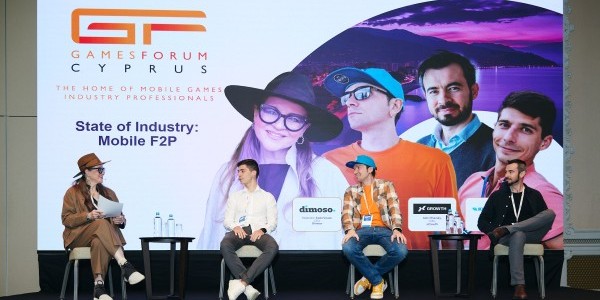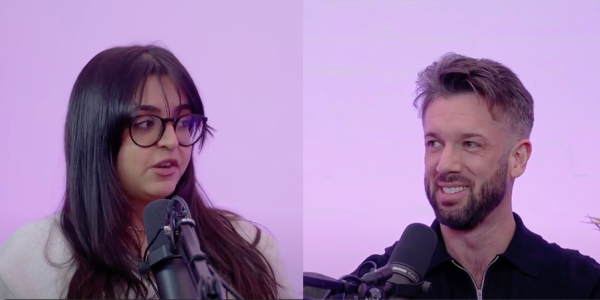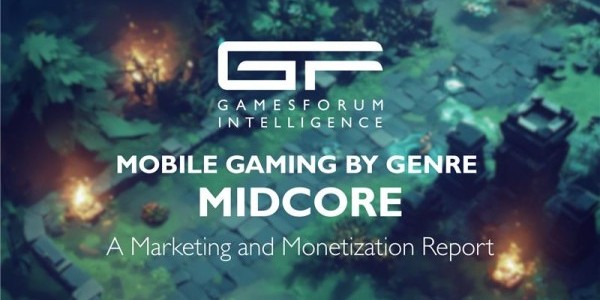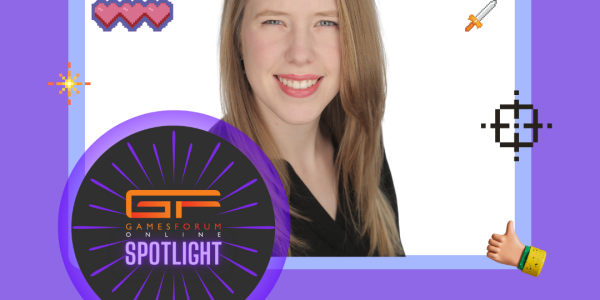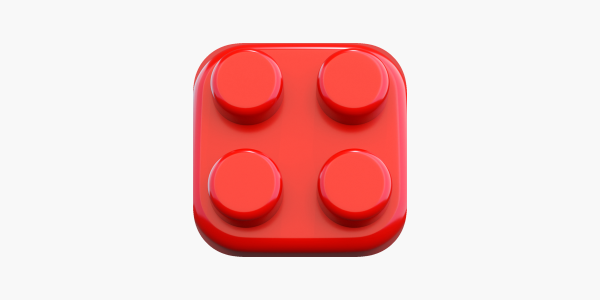How to Choose the Best Ad Mediation Platform

By Noelia López, Senior Ad Monetization Manager at Tilting Point
Ad mediation platforms can be powerful tools for developers who are looking to grow revenue for their game through advertising. And while they can help streamline the process of managing multiple ad networks and identifying the opportunities with the highest CPMs, these platforms often require a high degree of customization and consideration to deliver the best results.
My team at Tilting Point runs dozens of free-to-play live service games and has spent years comparing and contrasting various ad mediation solutions alongside our partners. While we’ve seen great results with platforms like ironSource, we’ve also learned that there is no one size fits all answer.
In this blog I’m going to break down the questions that every developer should be asking themselves as they evaluate potential ad mediation platforms — from support for a game’s best performing geos, useability features, and reporting capabilities, to special features and SDK considerations. Answering these questions helps us effectively run campaigns for our entire portfolio, and doing so should help you as well.
Which ad networks and features are supported?
The first thing to consider when evaluating the best ad mediation platform is which networks and regions are supported. A lot of solutions support major markets like North America and Western Europe, but games that draw a lot of traffic from Russia will want to check if they have MyTarget or Yandex support, and games that perform well in China, Korea, or Japan will want to have access to Tencent, Pangle, and Maio, for example.
It’s also important to make sure that any solution supports bidding for your most relevant ad networks. For instance, if you are using Pangle (or decide to do so) and they developed the feature, this is something you will want to check to see if it’s in the roadmap (or already integrated) with your preferred mediation. This is rapidly becoming the future of the ad business, and it’s critical for an ad mediation solution to keep pace with these fast moving digital marketplaces. A developer may also want to consider a mediation that allows them to have both options (Waterfall and Bidding) for the same ad network so they can test and choose what is working best.
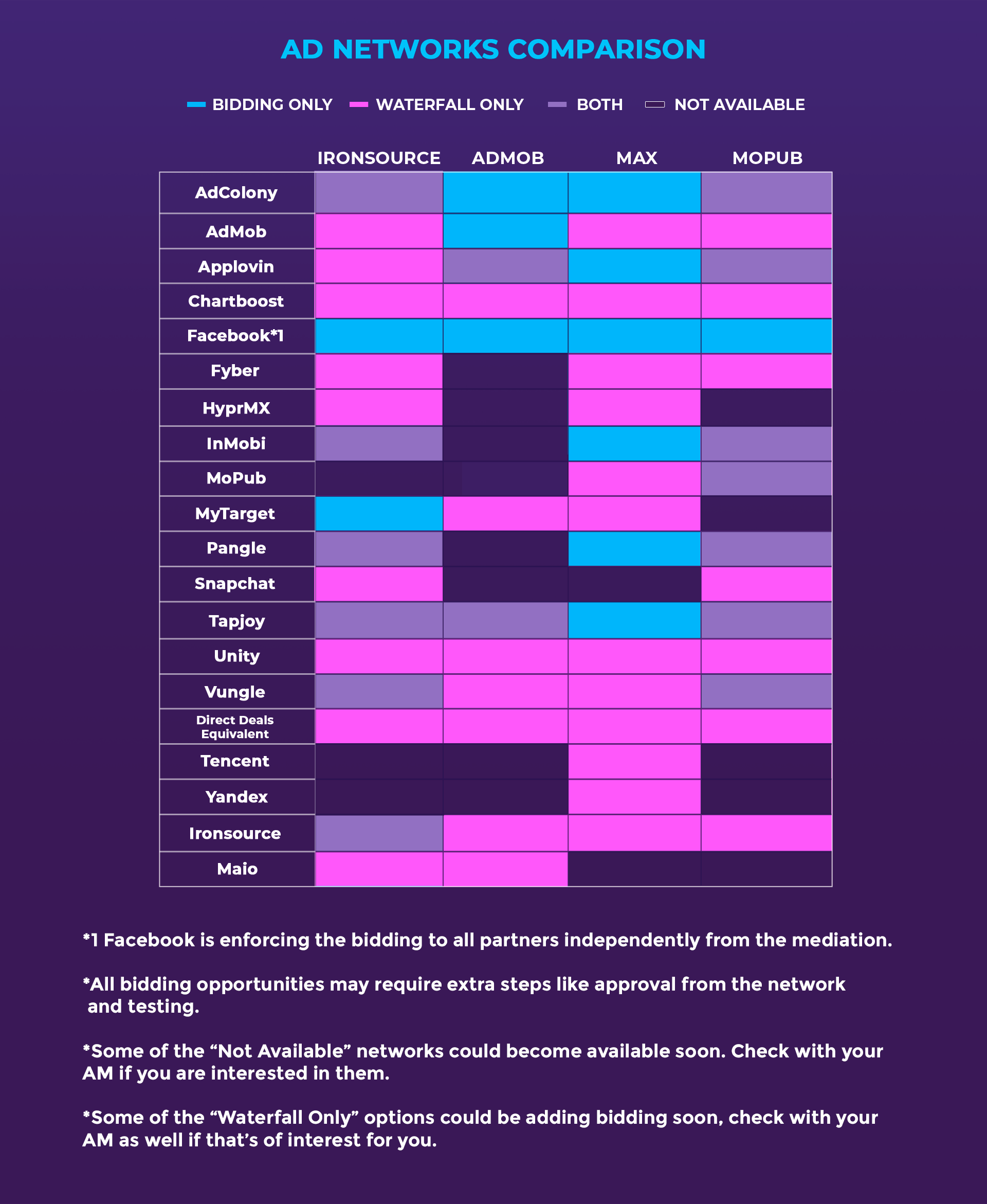
Marketing teams should think deeply about how their preferred solution will support the day-to-day workflow of any given team. For example, if A/B testing is a big part of a studio’s decision making process before taking risks, it’s critical that the ad mediation platform supports this functionality. The more thought that goes into the use case for a team in advance, the more successful they will be in locating the right ad mediation partner.
How is the user experience?
The last thing a developer wants to be doing when trying to make fast decisions about a mediation platform is wrestling with an unruly user interface. Therefore, it’s important to consider whether the solution has a streamlined, intuitive UI that the team is comfortable working in. Is setting up the solution fast and user friendly? Every minute of downtime means money left on the table.
For example, as we mentioned in a previous article “Don’t make these mistakes when measuring Ad Monetization,” teams need to have a lot of metrics before making an informed decision. When analysing the data from an A/B test, it’s important for studios to have all the data readily available and easy to check. What happens if only revenue is available? Or CPM? Developers may be missing part of the analysis and may not have a clue if the test was successful or if there were mistakes.
Another example is understanding how long it takes to get the data needed to make operational updates. The more information that is available in one view, the faster any decision will be. Teams should look for a solution that aggregates data in one place so they won’t need to pull information from multiple sources in order to understand trends in the data. When it’s easy to see the big picture, teams are more likely to find unexpected insights, rather than getting dragged down in administrative work.
It’s also a good idea to look for a partner with a robust customer success or support team. Studios should look for solutions that offer a dedicated account manager that will be available to help with the inevitable bumps that may appear down the road. When shopping solutions, it’s a great time to evaluate how helpful and responsive the company representatives are, and consider whether the support team will be there when a studio needs them the most.
How robust is the reporting?
When it comes to data and analytics, more is always better. But it’s also extremely important to consider the level of granularity that’s available in the ad mediation platform, because that’s how a team will be able to really slice and dice their data to understand their game’s unique needs, audience, markets, and overall performance. Look for the ability to dive deeply into User Ad Revenue (UAR), which is increasingly central for studios looking to create complex analytics and segmentation systems.
But all the data in the world doesn’t help if it’s difficult to access and organize. That’s why evaluating an ad mediation platform’s dashboard should be part of any review. Companies should look for a solution that is visual and easy to check without sorting through endless tabs. Visualizations should be easy to understand and provide actionable insights.
What advanced features are available?
One feature that has become increasingly important to my ad monetization team is the ability to do segmentation directly from the ad mediation dashboard. Eliminating the need to go into the code to do segmentation work can be a huge benefit, as the old manual method is often tedious and time consuming work. Great modern ad mediation platforms will feature tools to streamline this process.
As teams are looking for new revenue streams in light of changes to Apple’s updated IDFA policy, direct deals is another capability that studios should look for in ad mediation solutions. The best ones will feature a dedicated dashboard for direct deals and support both rewarded video and interstitials ad units, making it fast and easy to implement campaigns to boost traffic.
In light of the IDFA deprecation, some mediations added a number of interesting features like ID split segmentation (the ability to segment users according to the data they are sharing, whether they share the IDFA or if they don’t). Some solutions are also able to share whether users accepted the ATT, denied it, or it’s not applicable to them (under iOS14.5 or compliance regulations).
Is the SDK easy to work with?
Finally, it’s a good idea to consider an ad mediation platform’s SDK. While it’s important to have a painless integration at the beginning, teams should also consider what it will be like to maintain longer term. How easy is it to update? How often are updates available? And how easy is it to test the integration? Thinking about these things early in the process will help prevent growing pains in the future.
Key Takeaways
We’ve covered a lot of ground as far as the specific features any ad monetization team should look for in an ideal ad mediation platform, including…
- Support for multiple regions and bidding options
- A user-friendly interface and friendly support team
- Granular and accessible data reporting
- Modern features addressing industry changes
- A flexible and simple SDK
With all of this in mind, let’s have a look at how some of the top platforms on the market stack up in some of these areas:

About Noelia
Team up with a partner that knows best
Developers have never had more digital marketing challenges to navigate, or more options for solving them with ad mediation solutions, and it can be overwhelming for even the most experienced teams. If you’re looking for a partner with experience running ad mediation campaigns for dozens of games to help grow your ad revenue, the team at Tilting Point is here to help. Send us an email at [email protected] today to get started!
By Noelia López, Ad Monetization Manager, Tilting Point
As Advertising Monetization Manager at Tilting Point Barcelona, Noelia is responsible for maintaining and building relationships with Tilting Point’s various ad providers, as well as overseeing in-game advertising for the company’s portfolio of titles. Prior to joining Tilting Point, Noelia served as the Ad Monetization Manager at ZeptoLab where she handled ad operations, maintenance and management of eight of the company’s games. In addition, she also helped lead genre and projects research forecast for ZeptoLab’s existing and new projects, working side by side with designers, product managers and developers.
View Noelia talking about Ad Monetization on past episodes of the Gamesforum webinar
This article was originally posted on the Tilting Point blog. You can view the original post here or on Medium

